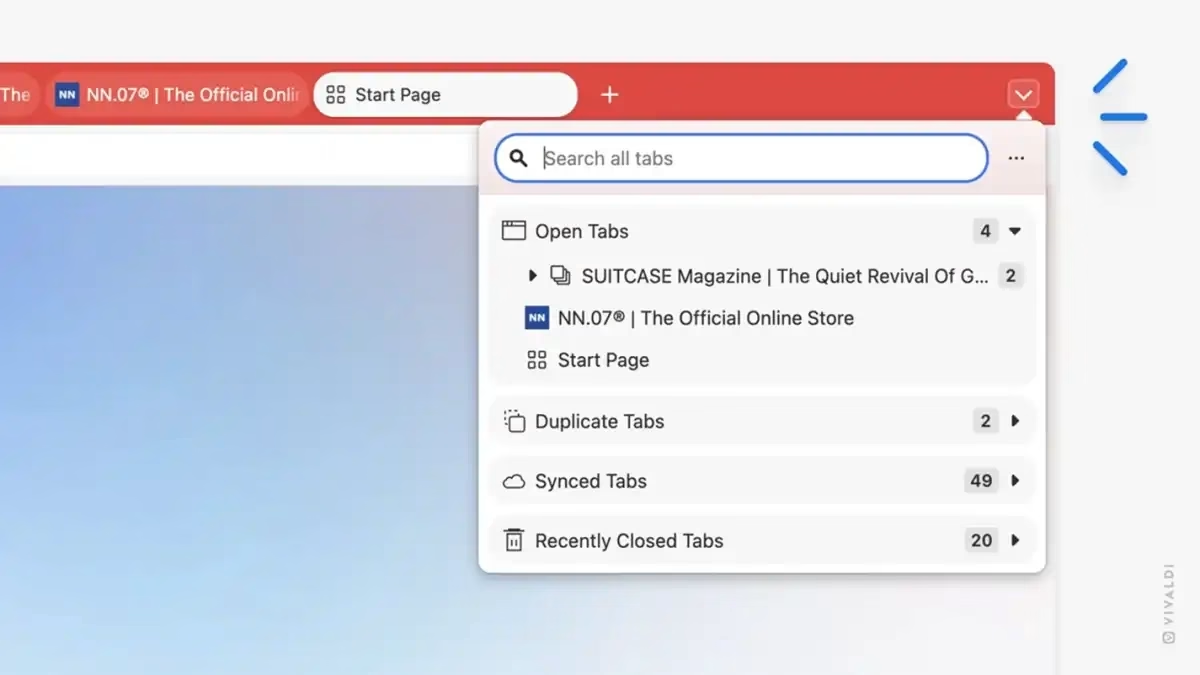Vivaldi Browser Unveils "The Tab Button" to Combat Tab Clutter
Vivaldi browser has rolled out version 7.6, introducing a significant new feature dubbed "The Tab Button." This innovative addition aims to streamline tab management by offering a centralized hub for searching, organizing, and handling active tabs, drawing parallels to how users manage their browsing history. It’s a move that directly addresses the common struggle of an ever-expanding and often overwhelming number of open browser tabs.
The Tab Button, which appears to replace the traditional close button ("X") in the upper right corner of the browser window, presents a drop-down menu. This menu intelligently categorizes tabs into three key areas: currently open tabs, duplicate tabs, and recently closed tabs. A prominent search bar at the top allows users to quickly filter through these categories, making it far easier to locate specific pages without the usual tab-bar hunt.
"Start typing, and you’ll filter across the things you care about: your open tabs, synced tabs, and your recently closed ones, all in one view," Vivaldi stated in their release notes. "Hit Enter to jump, or click to restore. The gain is flow: fewer detours, less hunting, more doing." This sentiment highlights the browser's focus on enhancing user productivity and reducing cognitive load.
Streamlining Tab Management: How it Works
For many, the browser tab bar has become a digital graveyard of unfinished tasks and forgotten research. The sheer volume can cripple performance and make navigation a chore. Vivaldi's approach with The Tab Button is a departure from manual pruning or simply starting over. Instead, it offers a proactive system for organization.
The feature consolidates tab management into a single, accessible point. Users can effortlessly find specific tabs, identify and potentially close duplicates (which Vivaldi notes can ease the burden on a PC), and quickly access recently closed tabs. This integrated search functionality extends to synced tabs across different devices, further enhancing the seamless browsing experience Vivaldi aims to provide. It's a smart, user-centric design choice that acknowledges the reality of modern web browsing habits.
Interestingly, Vivaldi already offered tab searching, but it was a more hidden command. The new Tab Button brings this functionality to the forefront, making it more intuitive and discoverable. This iteration builds upon Vivaldi's already robust customization options, which include placing tabs at various screen positions, creating tab groups, and utilizing workspaces.
Beyond Tab Management: Other Enhancements in Vivaldi 7.6
While The Tab Button is the headline feature, Vivaldi 7.6 also brings other notable improvements. The browser's ad blocker has been enhanced to automatically close "sneakily-opened tabs or windows that sell you something," adding another layer of protection and a cleaner browsing experience. Furthermore, the update introduces the ability to swipe left or right on a trackpad or touchscreen for easy navigation back and forth through web pages, a feature that feels quite natural for users accustomed to mobile gestures.
Vivaldi has also been vocal about its stance on artificial intelligence. In contrast to some competitors who are embedding AI features extensively, Vivaldi has emphasized its commitment to smart organization rather than traditional AI. The company has previously released statements, like their "Humans over hype" manifesto, expressing skepticism towards the current AI trend in browsing. The Tab Button, therefore, is presented as an intelligent organizational tool, not an AI-driven assistant. This distinction is important for users who might be wary of AI integration or prefer a more straightforward approach to browser functionality.
The browser also continues to integrate search capabilities directly into the address bar. Users can now type "@tabs" or "@history" followed by a search term to quickly find open or historical tabs, further reinforcing the theme of efficient information retrieval.
The Impact on User Experience and Future Outlook
The introduction of The Tab Button is more than just a cosmetic change; it's a direct response to user pain points. In an era where users often juggle dozens, if not hundreds, of tabs, a tool that simplifies management can significantly improve workflow and reduce frustration. Vivaldi's consistent focus on customization and user control positions it as a compelling alternative for power users and those seeking a more tailored browsing experience.
By offering a unified interface for tab management, Vivaldi is not just adding a feature; it's refining its core philosophy of providing a browser that adapts to the user, not the other way around. It's a smart move that could attract new users and retain existing ones who value efficiency and a clutter-free digital environment. It'll be interesting to see how this feature evolves and if other browsers adopt similar integrated tab management solutions.
